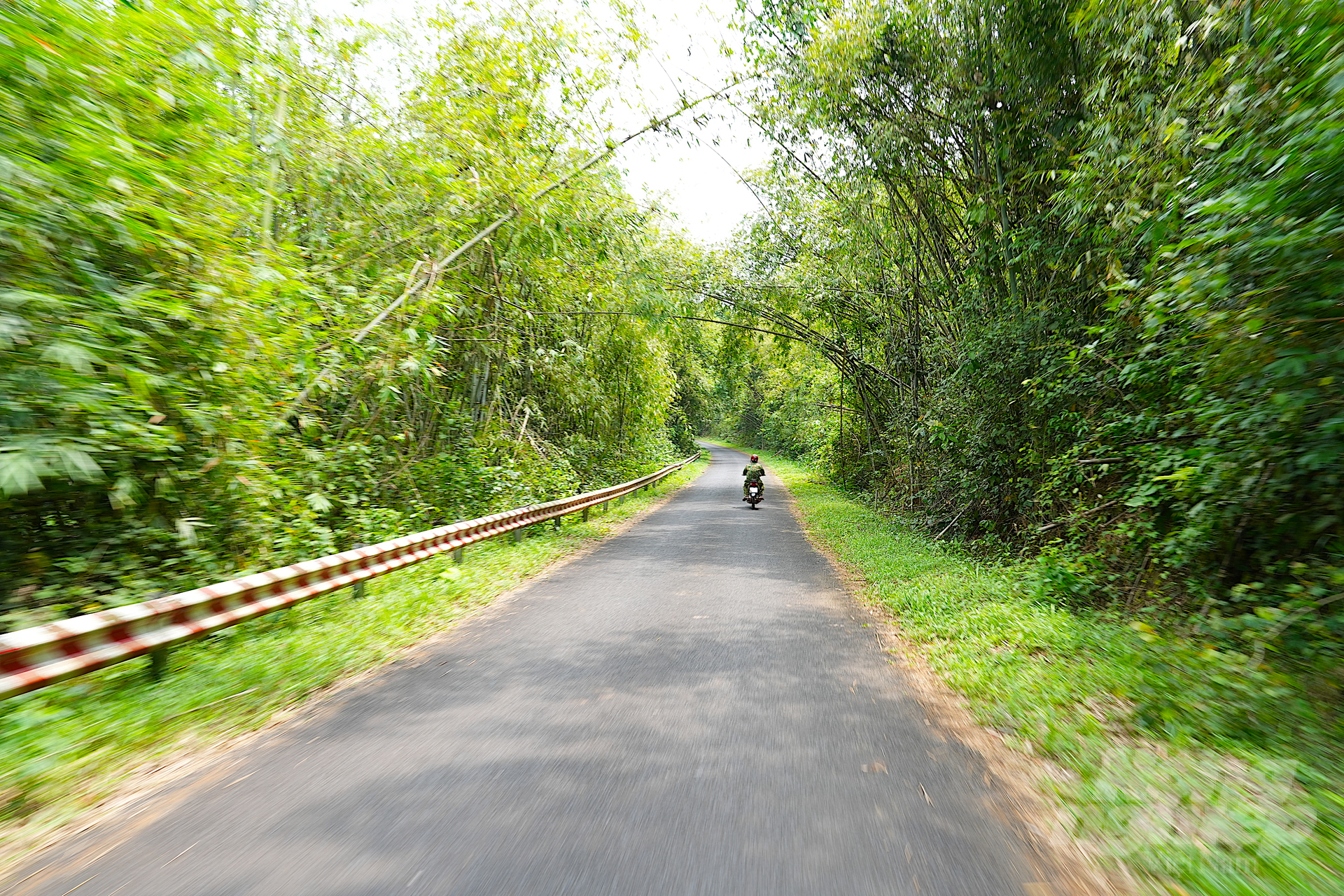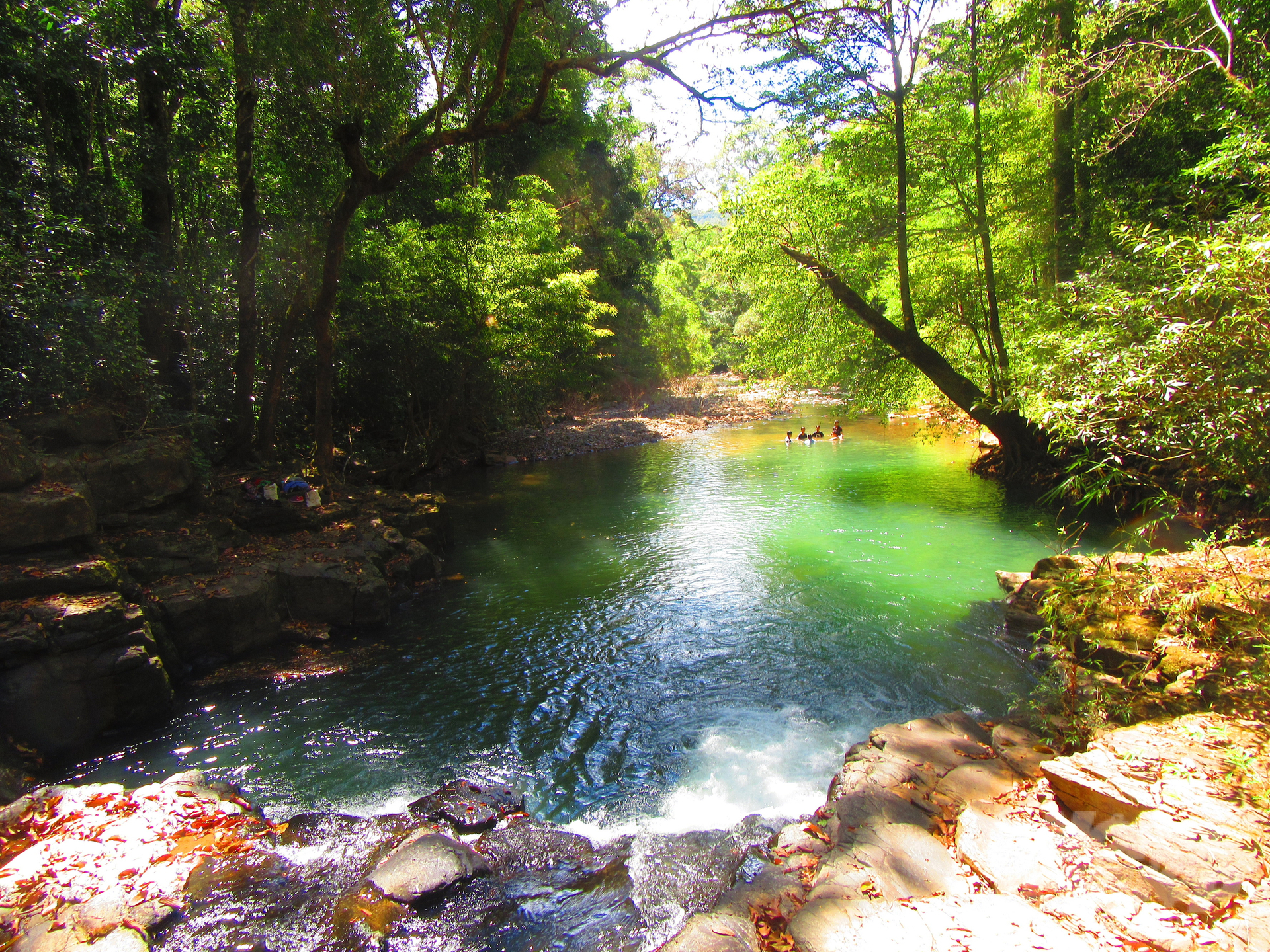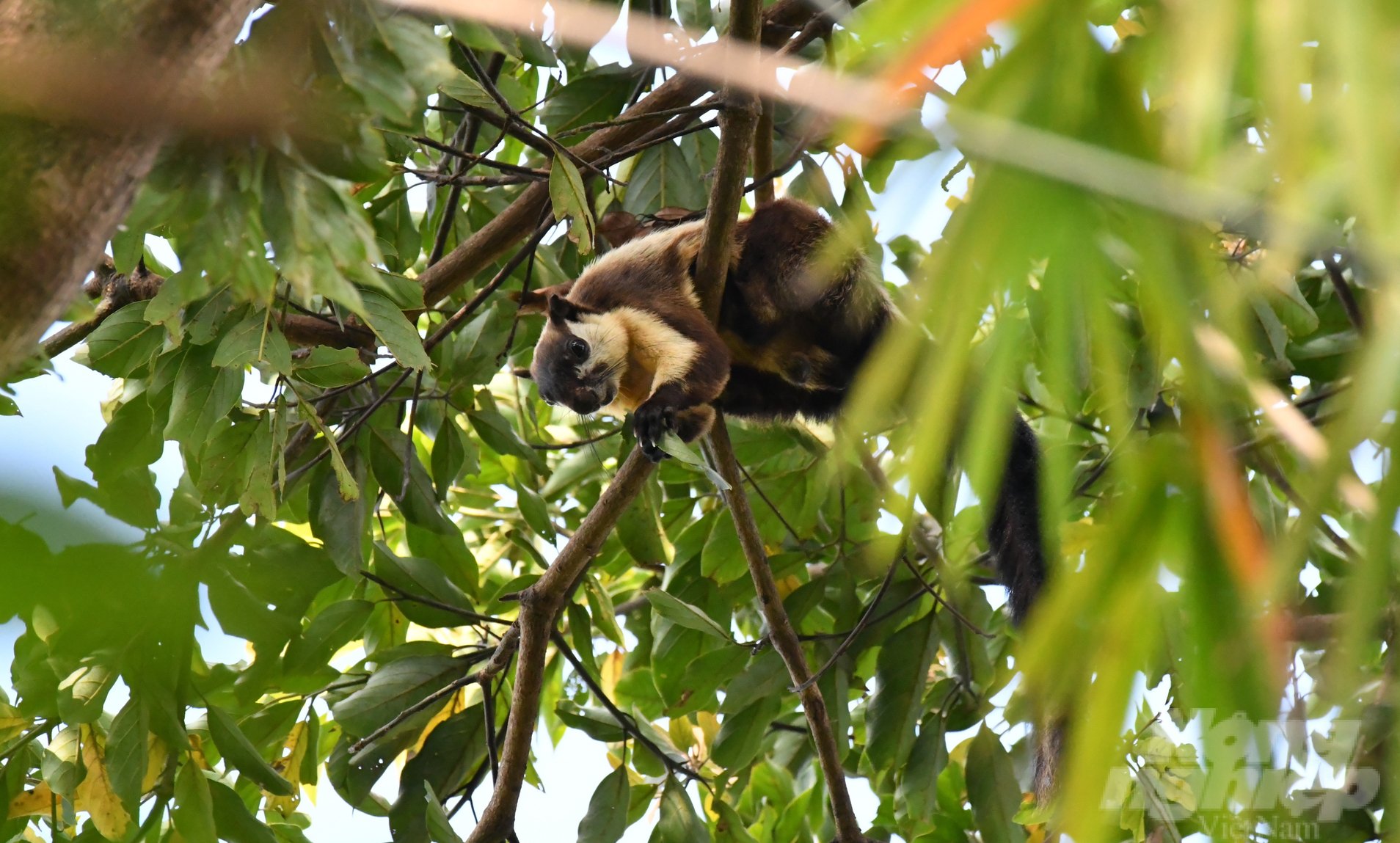May 21, 2025 | 05:54 GMT +7
May 21, 2025 | 05:54 GMT +7
Hotline: 0913.378.918
May 21, 2025 | 05:54 GMT +7
Hotline: 0913.378.918
Bu Gia Map National Park is gradually completing its application to UNESCO for recognition as a World Biosphere Reserve, i.e., Vietnam's 12th Ramsar site.
Bu Gia Map National Park has an area of nearly 26,000 hectares, of which 99% is natural forest. The park has 3 subdivisions, including a stricter protection subdivision with an area of 15,000 hectares, an ecological restoration subdivision of more than 8,000 hectares, and an administrative area. In addition, the Park also has more than 18,000 hectares of buffer zone. Bu Gia Map National Park is the forest with the largest contiguous area in Binh Phuoc province and the second in the Southeast region, after Cat Tien National Park.

Highway 14C passes through Bu Gia Map National Park to Dak Nong province. Photo: Hong Thuy.
According to Director Vuong Duc Hoa, Bu Gia Map National Park has a very high and rich biodiversity value, with many different forest habitats such as tropical moist evergreen forests and tropical moist evergreen closed forests.
The most recent biodiversity research results have recorded 1,114 plant species belonging to 480 genera and 126 families. Including 88 endangered and rare species, 11 species are in the World Red Book (IUCN 2020), 14 species are in the Vietnam Red Book, 76 species are recorded in Decree No. 06/2019/ND-CP of the Government, and 5 species recorded in the CITES list in 2019.
Regarding animals, the Park has recorded 835 species, including 106 species of mammals, 248 species of birds, 59 species of reptiles, 28 species of amphibians, 342 species of insects, and 49 species of fish. Of the 835 animal species recorded at the Park, there are 106 rare and endangered animal species, of which 9 species are recorded in the World Red Book (IUCN 2020); 15 species were recorded in the Vietnam Red Book in 2007, 84 species are recorded in Decree No. 06/2019/ND-CP of the Government, and 40 species are recorded in the CITES list in 2019. In addition, there are many species. Other species have not been specifically statistically studied.

Inside the forest of Bu Gia Map National Park, there are picturesque streams and waterfalls. Photo: Hong Thuy.
Because the forest has many rare animal species, protecting and preventing hunting and trapping wild animals by the staff, staff, and rangers of the Park is extremely arduous. “Every year, the Park coordinates with the authorities of 03 buffer zone communes to drastically and continuously deploy the work of preventing violations of wildlife protection at the Park. Regularly organize propaganda activities to protect wildlife from people.
Up to now, we have successfully built a network of people participating in reporting to the Forest Ranger force to destroy and remove thousands of large and small traps, handle hundreds of violators, confiscate and hand over. Nearly 20 guns of all types were handed over to the authorities for handling.
In 2016, Bu Gia Map National Park officially established the Center for Rescue, Conservation and Development of Organisms. The Center's mission is to receive, rescue, and release wild animals transferred by the authorities. In addition, the Center also nurtures and preserves the genetic resources of several common wild animal species to replicate the model of breeding forest animals for economic development and reducing illegal hunting of wild animals.

Big black squirrel, one of 835 wild animal species in Bu Gia Map National Park. Photo: Phan Van Bien.
“Since its establishment, the Park's Animal Rescue, Conservation and Development Center has received, rescued and released 323 wild animals of 30 different species. Many endangered species include Yellow-cheeked gibbon, Black-shanked douc, Small loris, Otters, and Civet... These animals were received from many provinces in the Eastern region and Central Highlands...", said Mr. Khuong Huu Thang, Deputy Director of Bu Gia Map National Park Rescue Center.
In 2022, leaders of Binh Phuoc province and a delegation of experts from the National Committee of the Vietnam Human and Biosphere Program, the Department of Cultural Affairs, and UNESCO of the Ministry of Foreign Affairs had a working session to assess the ability to respond to the request preliminarily. Meets the criteria for nomination as a national natural heritage of Bu Gia Map National Park, an ASEAN Heritage Park (AHP), and a World Biosphere Reserve in Binh Phuoc province.
At the meeting, the working group determined that the proposal to recognize the World Biosphere Reserve of Binh Phuoc province with Bu Gia Map National Park was feasible. At the same time, it is recommended that the provincial departments and branches provide accurate information and quickly complete the dossier to submit to UNESCO for recognition.
Translated by Tu Quyen

(VAN) Japan's grant aid project contributes to capacity building, promoting organic agricultural production, and fostering sustainable community development in Dong Thap province.

(VAN) For years, the CRISPR-Cas9 genome technology has been reshaping genetic engineering, a precision tool to transform everything from agriculture to medicine.

(VAN) Vietnam aims to become a 'leader' in the region in the capacity and managing effectively soil health and crop nutrition.
![Reducing emissions from rice fields: [Part 1] Farming clean rice together](https://t.ex-cdn.com/nongnghiepmoitruong.vn/608w/files/news/2025/05/05/z6509661417740_a647202949c539012a959e841c03e1d3-nongnghiep-143611.jpg)
(VAN) Growing clean rice helps reduce environmental pollution while increasing income, allowing farmers to feel secure in production and remain committed to their fields for the long term.
/2025/05/19/5136-1-144800_230.jpg)
(VAN) The Nghe An Provincial People's Committee has just approved the list of beneficiaries eligible for revenue from the Emission Reductions Payment Agreement (ERPA) in the North Central region for the year 2025.

(VAN) 14 out of 35 domesticated elephants in Dak Lak province have had their living conditions improved, with 11 of them currently participating in the non-riding elephant tourism model.

(VAN) Muong Nhe Nature Reserve hopes that being upgraded to a national park will lay the foundation for forest protection efforts to be carried out in a systematic, modern, and sustainable manner.